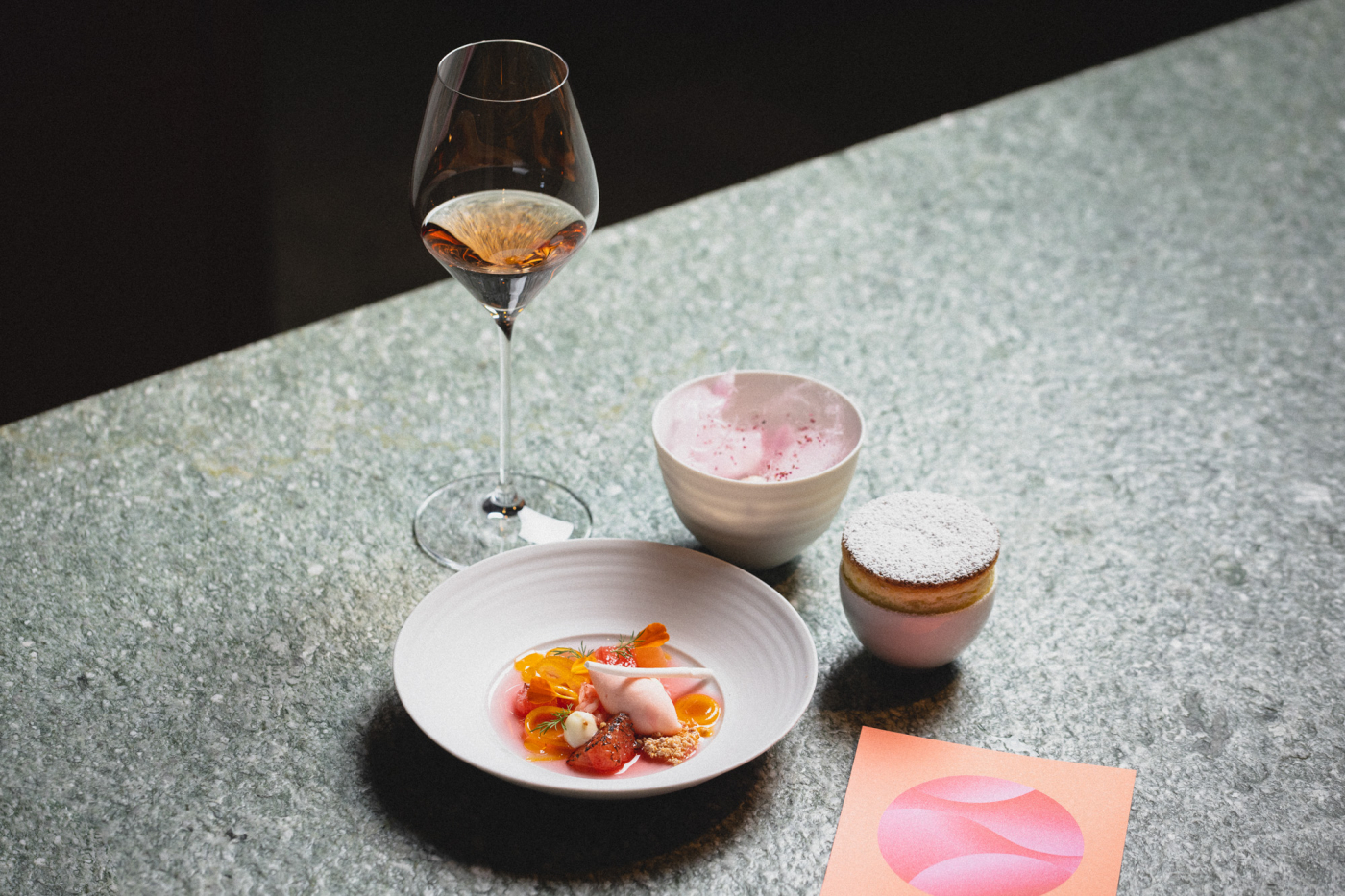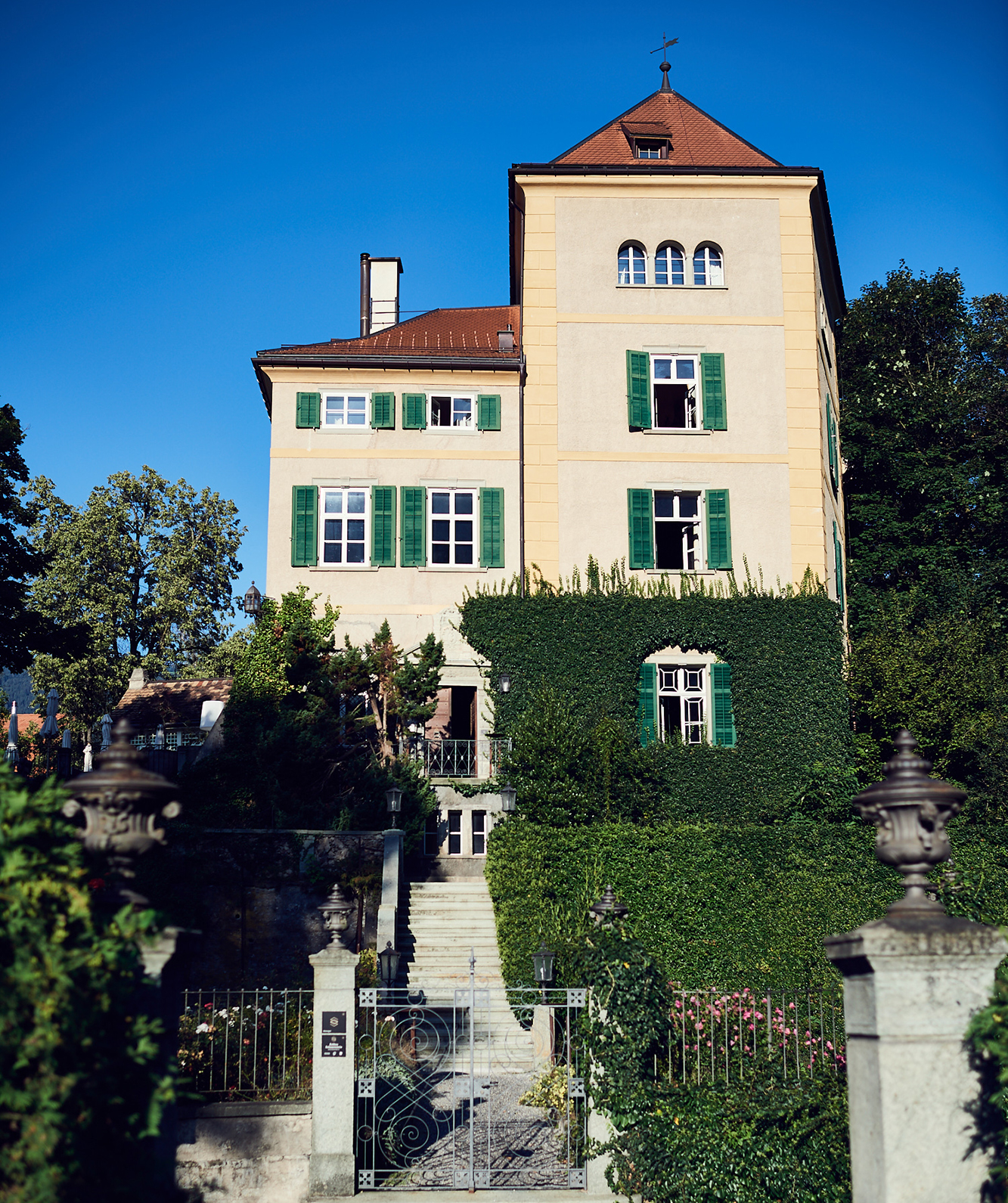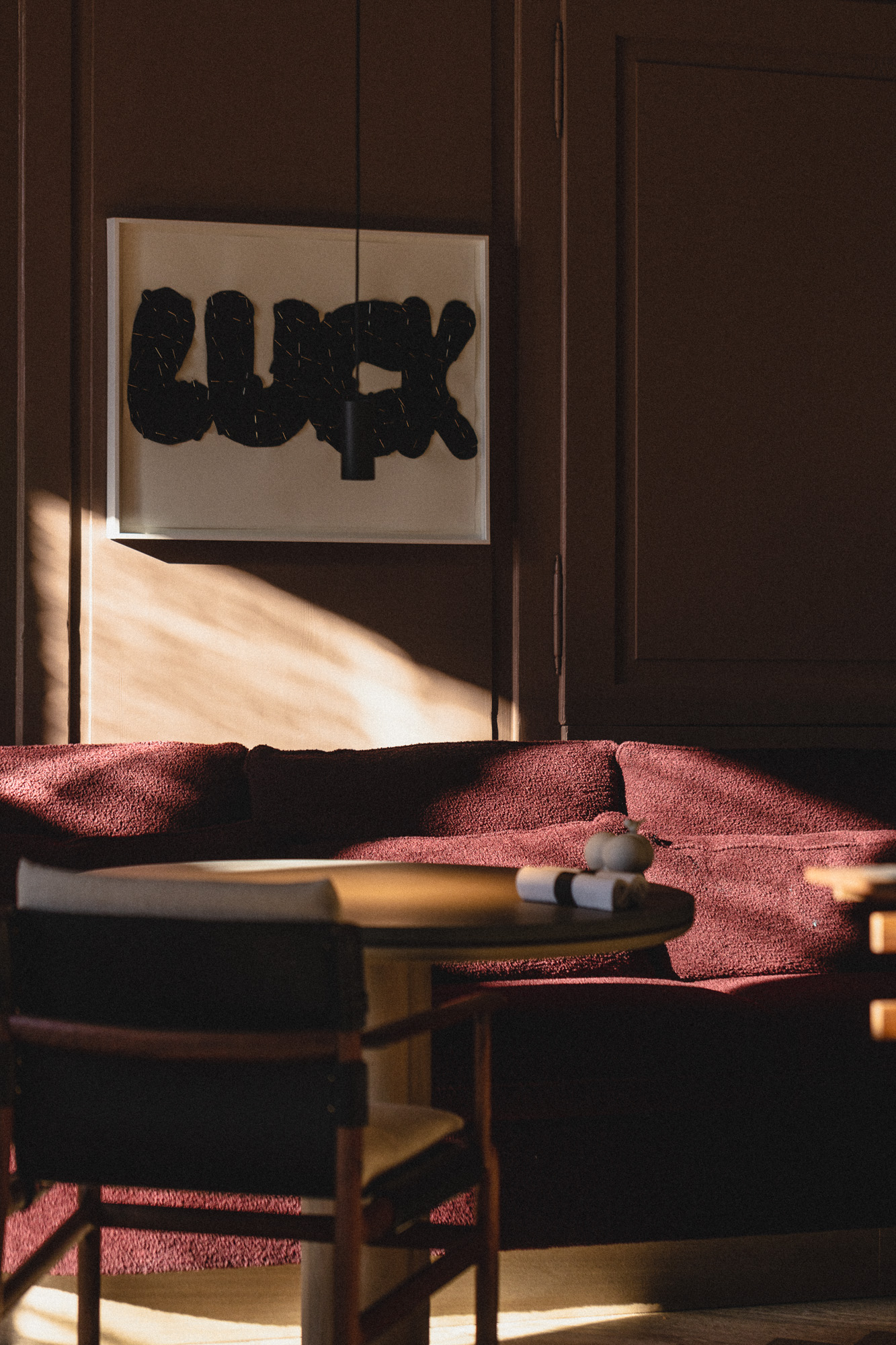
A fairytale castle with chef charming | Schloss Schauenstein, Fürstenau
Schloss Schauenstein is one of the most beautiful restaurants in Switzerland, and the Disney prince in the kitchen is easy on the eye too

Schloss Schauenstein is one of the most beautiful restaurants in Switzerland, and the Disney prince in the kitchen is easy on the eye too

Andreas Caminada certainly looks the part. Chef, sure, but exquisitely groomed, carefully manicured magazine cover model, as well. Or someone who should be selling V-necks and expensive watches. He’s just too sexy to be cooking. Too fanciable and beddable to be hidden in some dank corner kitchen. He has the swept-back, salt-spectacled hair of a Greek god and the neat, trimmed stubble of a high-class gigolo. He is the only chef, in more than 13 years writing about chefs and restaurants, that my mum has taken an interest in, and it has nothing to do with his salted melon and whitefish recipe.
He’s just too sexy to be cooking. Too fanciable and beddable to be hidden in some dank corner kitchen
When you play the sexy male chef calendar game*, which we all do (nah, nah, we do!) of the allocated 12 slots, Andreas is invariably mentioned within the first two names. To be born Swiss is to be given the keys to a prosperous existence, along with all the cheese, penknives, cuckoo clocks and bars of Toblerone you could ever dream of. But to be born Swiss and Andreas Caminada is to be one of the lucky few. He has the charm of Clooney and in his chosen profession, stands alongside Europe’s best.

Andreas Caminada at Schloss Schauenstein
But to the restaurant and the cooking, because that’s what really matters. Andreas makes food with intelligence and genuine excitement for the region and country from which he’s from. Switzerland could not do better than him as its culinary ambassador. His imagination and garden are the best things that have happened to Swiss cuisine in decades. I don’t think it was something that needed shaking up; there’s the cheese and chocolates, of course, but just as Spanish food needed Ferran Adria and the Roca brothers, Italy needed Massimo Bottura, Switzerland deserves Andreas Caminada.
His restaurant, Schloss Schauenstein, is set within Schauenstein Castle. Yeah, a castle. Built towards the end of the Anglo-Dutch War, between 1667 and 1676, and under the aegis of Baron Johann Rudolf Von Schauenstein (try saying that with a mouth full of Toblerone), it is one of the country’s best and most bewitching of the Old Swiss Confederacy strongholds. Located within the Domleschg Valley of Switzerland’s Grisons mountains, just four people were part of the team when Andreas took over the lease in 2003, aged just 26.

Schloss Schauenstein
Today, more than 45 staff members operate across the restaurant and its rooms. It has three Michelin stars, plus the bonus green, and was awarded 19/20 points by Gault Millau; a score the restaurant has maintained since 2009. This year, it placed 26th in the World’s 50 Best Restaurants list. So, yeah, it’s a high achiever. A favourite of the foodie trainspotter. One of the globally celebrated and possibly one of the best. Certainly one of the most admired.
Once you absorb the above, thoughts turn to how you can secure a table in such a place. And it isn’t just about tasting the food, but entry into the castle (although, some make the pilgrimage to simply glimpse the handsome Caminada). I’ve been wanting to visit for years, crossing paths with Andreas everywhere but Switzerland. Therefore, as financially strapped as I am, and in order to get a booking, I joined a press group, hyping the promise of a review. I also dropped my name. And again. And then again one final time, but a little louder. And then flung it down the phone, but this was met with silence. Eventually, I joined a group of other piggish scribblers for lunch, making the hour-and-a-half trek from Zurich to Fürstenau.

Kopfsalat Kopfsalat
So I’m going to zip through this, but I don’t want you to miss anything. There were appetisers with crisps and kimchi, a herb and roe cannelloni, mountain cheeses of various ripeness and appellations, with titbits made from beef, pastrami, beetroot, tomato and kohlrabi, also known as German turnip. Sometimes, it’s the simplest things that make the greatest impression. Here there’s lettuce, cucumber, onions and carrots. Nothing complicated about that. And the “snacks” that followed were the most gorgeous little things: crackers and taco-like wedges with carefully applied daubs of ponzu and mustard. White fish with salted apricot, yellow beets with chilli and duck gyoza with a burnt crisp socarrat, like from the moreish bottom scrapings of a perfect paella.
Lunch gathers pace as we move through the list, the bountiful castle garden revealing itself more and more. Figs, begonia, spinach, wild rocket, chard, buck’s horn plantain, red mustard leaf, the liquorice-scented sprigs of freshly pulled tarragon. I had the pike (the fish brought to the table by Andreas before lunch began) with cucumber, prickled with salted melon, and brilliant sweetbread with onions: defiant cooking that reflects our surroundings. For any green-fingered cook or gardening wonk, this is enviable stuff, food of timely freshness that tastes alive, punctuated by intense dabs of earthy sauces and garden dressings. These are the pure, natural flavours of horticulture, and all from mere seconds away.

Schloss Schauenstein
I cannot understate the seasonal dependence the kitchen places on their garden. Over 80 per cent of the vegetables used at Schloss Schauenstein and OZ, Andreas’ vegetarian and second on-site restaurant, are sourced from the garden. Therefore, as September lethargically shuffles towards October, much of the grounds will be redesigned; and the soil and troughs will be prepared for another weather cycle. They’ll also overhaul the pantry, an impressive subterranean lucky dip of shelved jars and jugs; and all manner of things salted, dried, pickled, cured and aged, some moulding, others ripening, a few filtered through moss.
And while you read this litany of garden grub, let me tell you that not a single mouthful at lunch was singly sharp or bitter, nothing overly sweet or earthly-grubby. Rather it is softly, softly cooking with a great warming hug of elegant flavours, all the produce doing the work, thanks in large to local, onsite farmer, Marcel Foffa.
Any chef fortunate enough to cook at Schloss Schauenstein will work under head chef Marcel Skibba while also spending part of their tuition working in the nearby gardens under Marcel, honing their agricultural understanding. Here they get down into the squidge and sludge of the mire, getting their fingers grubby, caring for the filigree in the old greenhouse, or rearing tomatoes that come to Fürstenau as seedlings from Norbert Alig’s organic operation in Prättigau. They planted over 400 artichoke shrubs this spring, I’m told, twice as many as during the test phase last year.

Schloss Schauenstein
“To understand the surrounding nature is one thing,” Andreas tells me as we inspect the garden and vegetable plots before lunch. The impressive setup is accessible via his private-ish back garden, passing the golfing tee he’s installed to practise his swing, caning balls across unknown yardage into a bulging net below. “But to appreciate nature, that is something greater,” he continued. “That is the centre of our culinary philosophy and the joy of preparing the extraordinary with the supposedly ordinary.”
And so much of lunch was about the so-called ordinary and what’s around us, outside and over the way. It is the combination of a lot of craft and skill, as well as planting, growing, cultivating, husbandry and fine dining floriculture. It is the essence of the environment. The setting for lunch, a round table by the window, the flickering light, and the lowering of the September sun droopy over the Piz Beverin mountain seemed ethereal, like dining in a fairytale. But then, I suppose you are in a castle, and that goes quite some way in preparing and establishing the mood.
Courses came and went with pace, arriving like characters from the village, strutting across the menu, all boastful of Fürstenau and Grisson’s ploughlands and farmsteads. Names are dropped throughout: honey from Maurice just up and over there, berries gathered this morning by Mildred and Matteo, apricots lovingly picked by Giulia and the bunker-aged cheese tried and tested by the kitchen staff. Bread is from the onsite bakery and they roast their own coffee in a small roastery. A serenade of local produce as incantations as much as recipes.

Ciccorino Dörrbirne
The cheese trolley, as you might expect, is a thing of wonder. Rolled to the table, it appears to stand as three-tiered shelves, each heavy under the weight of käse, but it is then flattened into one grand table of post-codal fromagerie by the science of clever furniture design. Cheeses are nation-defining artefacts, and this spread promised everything firm, stiff, milky, blue and gooey from the boastful Swiss abundance of celebratory cheese revelry.
You can tell a lot about a country from its cheese. France has more than 400 types, as does Italy. The English, though, we produce almost twice that. And we have cheddar. The French camembert. The Italian parmesan. And the Americans have, erm, Philadelphia. The Swiss have emmental. And then all the other ones, too, presented here: Mühlstein, Rainhütten, Huuschäsli, Blaines Wunder, L’Etiraz, Quadretto, Stanser Fladä, Schwarzes, Bleuchâtel, cheese on cheese on cheese…
You can also tell a lot about a country from its wine, too. Here guests have access to a 3,000-bin list that gives prominent space to the best of the country’s regions and grape varieties, including standouts from the Gantenbein family in Fläsch, both Pinot Noir and Chardonnay. Under Anna-Lena and Marco Franzelin, boozy options rise and fall in line with Marcel and Andreas’s seasonal shifting menus, balancing modern and adventurous tippels with the classics.
Schloss Schauenstein is a joyfully comforting, Swiss hug of a restaurant, where the journey to get here becomes a story, and the menu captures the essence of food; ingredients carefully and lovingly planted, cared for and harvested while extolling the skill and craft and patience required for such cultivation. And it’s in a castle. With the Swiss mountains as your wallpaper. Plus all that cheese. And the staff are all kind and happy and willing to help, massaging the ego of the diner so that by the time the first course arrives, you’re not sure whether they’ve taken a handful of happy pills or are just coming on strong and now you’re dating. And then there’s Andreas Caminada cooking. And he’s as passionate about this kitchen as he is good-looking. My sexy male chef calendar first pick. My September man. C
Schloss Schauenstein, Obergass 15, 7414 Fürstenau, Switzerland
schauenstein.ch
*According to an Instagram poll, the 12 sexiest male chefs are, in no particular order: Andreas Caminada, Rodolfo Guzmán, Christian Puglisi, Floriano Pellegrino, Alex Atala, Jeremy Chan, Joris Bijdendijk, Mattia Agazzi, Alejandro Chamorro, Marcelo Ballardin, Juan Luis, and Willem Hiele.